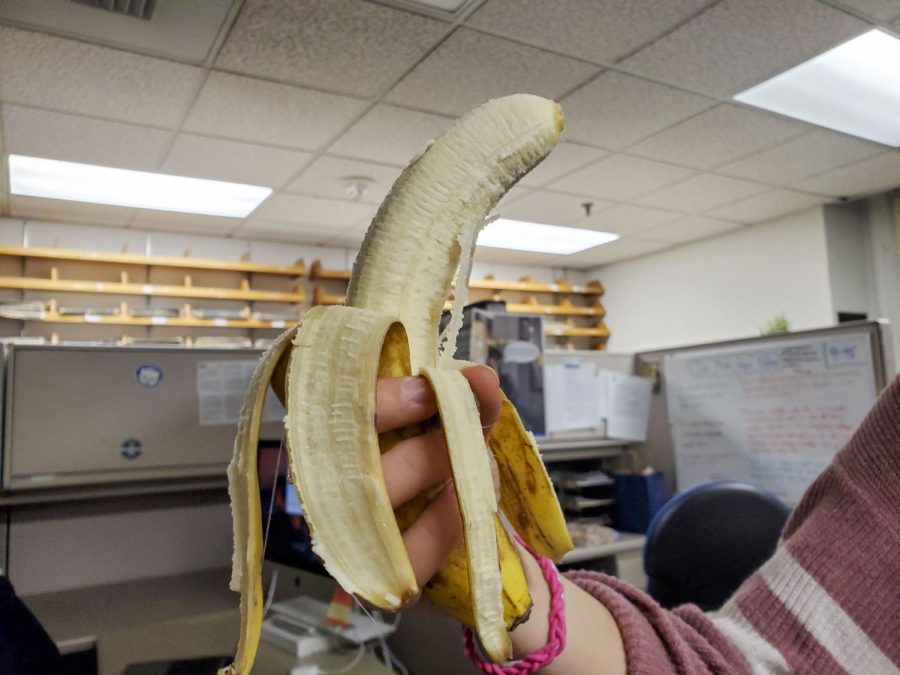Editorial: Someone is finally telling you the best time to eat a banana
February 20, 2020
The most poignant type of betrayal is when you’re really jiving with someone and you proceed to find out that they like to eat green bananas.
There are more than 1,000 different types of bananas. The fruit is grown in more than 150 countries, and though the cavendish is most common, bananas are divided into more than 50 individual groups. There are two ways to peel the fruit — like a monkey, from the bottom, or like a human, from the top.
But there’s only one ideal ripeness. And it’s a radiant, sunshine shade of yellow.
Bananas take about four days to transition from green to yellow. Then, they stay “ripe” — which is to say, a solid yellow — for about two days. When bananas are yellow, they’re easiest to digest. And the riper the fruit is, the higher in antioxidant level it is. Antioxidants are correlated with the reduction of disease, and they can reduce the damage to the body caused by oxidation. Some might say antioxidants protect the body, guide the body towards sustenance like a patron saint. O holy yellow banana.
And if you don’t eat your bananas in this three to four day timeframe, you can just let them become overripe and brown, and then eat them anyway, because brown bananas still taste far better than green bananas. Soft mush is better than a block of starch, which is the green banana. And if they ripen too quickly, you can freeze brown bananas and use them to sweeten oatmeal or make banana bread.
One simply cannot make banana bread with green bananas, and this is one of the reasons why green bananas are at the bottom of the banana hierarchy — ringing in just above last place, which goes to the moldy banana. If you do know someone who likes to make their banana bread with green bananas, watch them carefully — they probably don’t yawn when other people yawn.
It’s true that green bananas are bursting with riches in a way that yellow bananas are not. They have higher levels of resistant starch and pectin. But they also taste like kale sprinkled with stevia, which is fine if you want to eat kale sprinkled with stevia, but if you’re eating a banana then you probably want to just be eating a banana. Green bananas are far harder to digest, and often have the tendency to cause gas and bloating, which nobody wants. If they do want this, they might also not yawn while other people yawn.
And as if the looming threat of gas and bitter taste isn’t bad enough, green bananas also stick to your tongue like candle wax, and they make a weird, uncomfortable crunchy sound while being peeled. One might choose to compare said sound with the word moist — it’s simply aversive.
Here at The Pitt News, we’re all for going green. Except for when it comes to bananas.



